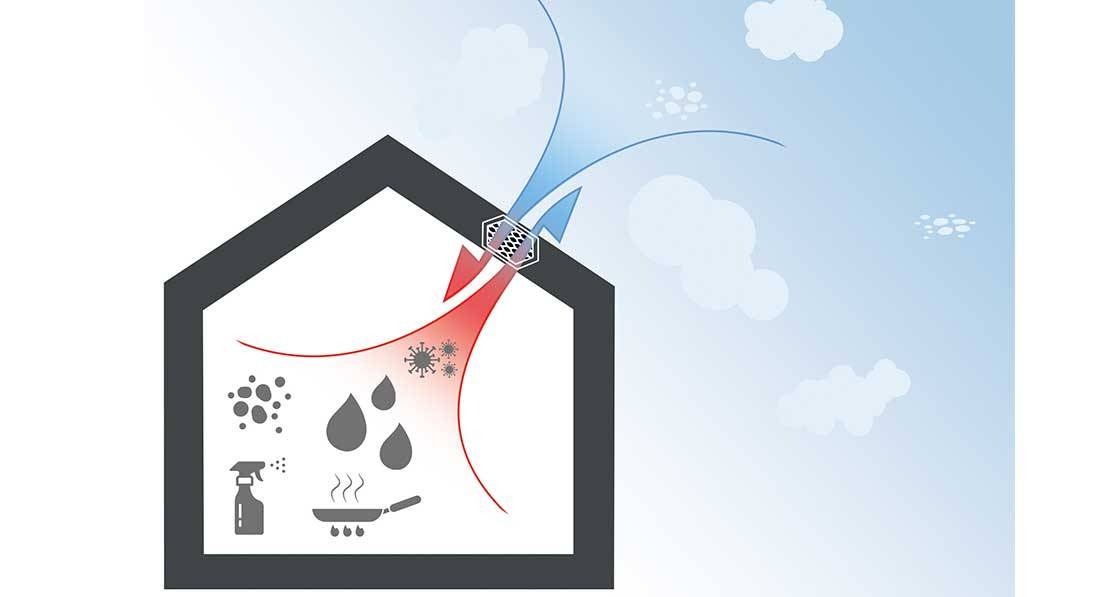
- coronavirus
- Posted
New report questions long-held MVHR assumptions
A new report by the Passivhaus Trust has questioned the common assumption that mechanical ventilation with heat recovery (MVHR) is inappropriate in dwellings with air permeability worse than 3 m3/m2/hour.
This article was originally published in issue 34 of Passive House Plus magazine. Want immediate access to all back issues and exclusive extra content? Click here to subscribe for as little as €10, or click here to receive the next issue free of charge
It is common practice not to recommend the installation of MVHR systems in such homes, but the new report, titled ‘The case for MVHR’, says there is “no clear up-todate evidence” behind this rule. It said this benchmark is based on “outdated information and flawed assumptions”.
Written by Passivhaus Trust policy director John Palmer, with input from a range of other leading experts, the analysis critiques some of the common assumptions behind the rule, such as the view that above 3 m3/m2/hour MVHR becomes inefficient due to increased electrical load or less efficient heat recovery.
“This analysis has shown that MVHR systems result in improved ventilation and lower carbon emissions for all levels of airtightness,” it says. “There is a compelling case for MVHR systems to be fitted in all new dwellings and to be strongly encouraged in retrofits where significant reductions in energy demand are being targeted.”
There is growing relevance to questioning the 3 m3/m2/hour rule given questions over whether SARS-CoV-2, the virus that causes Covid-19, can spread more easily in poorly ventilated spaces. REHVA, the Federation of European Heating, Ventilation and Air Conditioning Associations, has advised that all ventilation systems that recirculate air should be switched off, and replaced with as much fresh air ventilation as possible. MVHR systems provide 100% fresh air by default.
The Passivhaus Trust stated: “MVHR systems extract warm but potentially stale, dirty, and humid air from bathrooms, kitchens and utility rooms before passing it over a heat exchanger which transfers the heat to fresh, filtered air from outside the building. Extract and supply air streams are fully separated, eliminating contamination risk.”
The full report is free to download at www.passivhaustrust.org.uk.
Related items
-
 King of the castle
King of the castle -
 Energy poverty and electric heating
Energy poverty and electric heating -
 New Ejot profile cuts thermal bridging losses by 25mm insulation equivalent
New Ejot profile cuts thermal bridging losses by 25mm insulation equivalent -
 Build Homes Better updates Isoquick certification to tackle brick support challenge
Build Homes Better updates Isoquick certification to tackle brick support challenge -
 September’s AECB environmental construction conference seeks to spark debate among industry experts
September’s AECB environmental construction conference seeks to spark debate among industry experts -
 Material matters - A palette for a vulnerable planet
Material matters - A palette for a vulnerable planet

